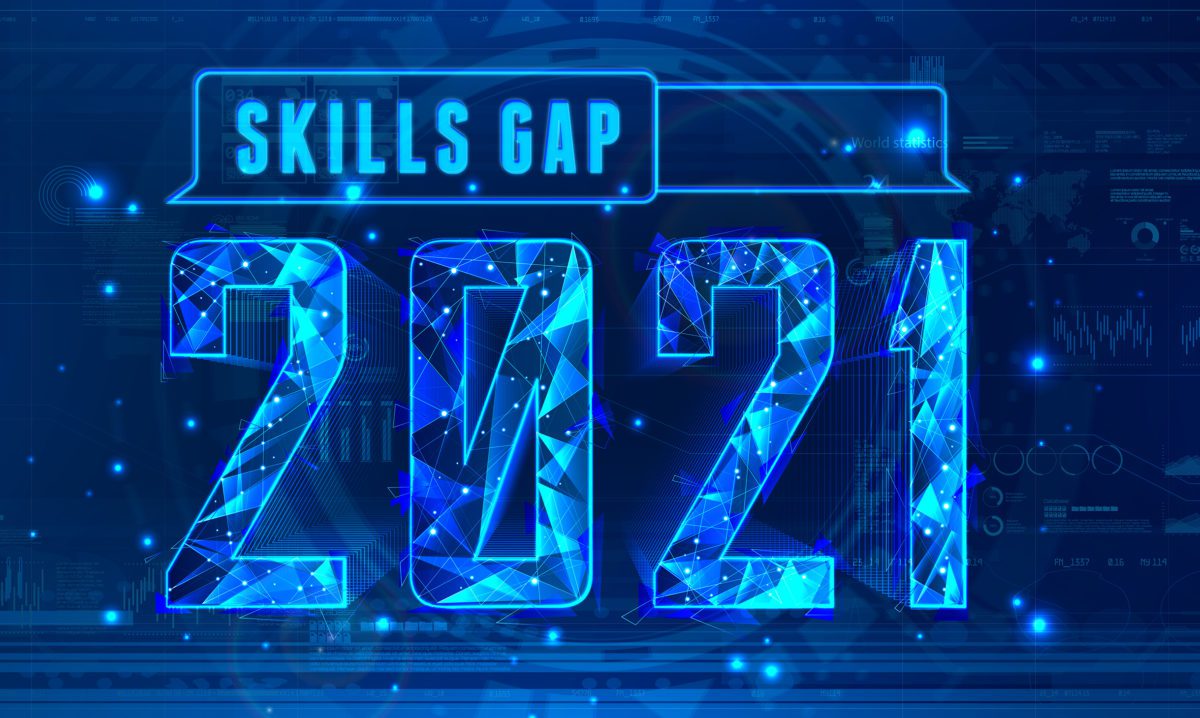It’s safe to say that it’s been a year of changes. From how we interact with others to the ways in which we work, nothing looks the same as it used to. Things are set to change even more with a new administration entering the white house.
However, one thing remains the same, the need to close America’s skills gap.
2020: A Year of Ups and Downs
Industry Week explains that “The coronavirus has exposed the vulnerabilities of our modern economy, forcing thousands of businesses to shutter and putting millions of Americans and people around the world at financial risk.”
We couldn’t agree more. Since February of 2020, employment in manufacturing is down 621,000 and other industries are feeling the affects of the Coronavirus as well. Not only that, but manufacturing productivity has also fallen in 2020. According to the U.S. Bureau of Labor Statistics, “Manufacturing labor productivity decreased at a 15.5-percent annual rate in the second quarter of 2020, as output fell 47.0 percent and hours worked dropped 37.3 percent. These were the largest quarterly declines ever recorded (data begin in 1987).”
However, it’s not all doom and gloom. There will be a light at the end of the tunnel and things will eventually begin to improve. Employment in manufacturing increased during October by 38,000 jobs.
While earnings have somewhat decreased, hours for existing employees have increased. The BLS says, “Average weekly hours of all employees rose 0.3 hour in October to 40.5 hours. For production workers, the average workweek increased 0.1 hour to 41.2 hours.”
New Administration, Same Focus
Earlier last year, President Trump’s administration shifted its emphasis on hiring for the country’s biggest employer, the federal government. According to SHRM, the executive order “directs important, merit-based reforms that will replace degree-based hiring with skills- and competency-based hiring.” Trump’s move echoed what some in the industry, such as Elon Musk, are already moving toward.
Musk doesn’t require college degrees to work at Tesla. Business Insider reports “Rather than a degree from a prestigious university, Musk said he looked for ‘evidence of exceptional ability’ in an employee.”
President-elect Biden’s administration will also share the Trump administration’s and Musk’s focus on skills. On November 9th, a new federal workforce policy agenda for President-elect Joe Biden and Congress was released by the National Skills Coalition. Training partnerships and apprenticeship will be a focus for the plan.
The National Skills Coalition says, “President-elect Biden has called for a $50 billion investment in workforce training, including investments in industry-led training partnerships and expanding apprenticeship opportunities. Biden has also proposed providing two years of tuition-free community college for recent high school graduates and adults who may need retraining to advance in their careers or transition to new industries.”
What’s Next?
Props to our government for their efforts in helping to close the skills gap. But they alone can’t wrangle the decades-old elephant in the room: How to reach the next workforce generation in ways that make advanced manufacturing careers appealing to them. The business-as-usual ways of workforce recruiting through websites and shiny brochures don’t resonate with Gen Z. If we don’t innovate now, we risk losing them forever.
COVID-19 has given us increasing opportunities to train and reach Gen Z in their digital world, and reversing Gen Z’s ‘Plan B’ mindset regarding manufacturing careers should be no different. By leveraging their phones already in their hands, modern manufacturing can employ interactive educational technology to help Gen Z develop real-world work skills through interactive, digital experiences that will engage with industry and expose users to existing opportunities.
The most revered workforce in the world uses gaming for training, upskilling, soft skills, and for recruitment! “America’s Army” is the official game for the US Army that lets players try out virtual missions, in some cases for real. This is augmented, tactical training with quantifiable metrics and a sophisticated interface that helps save lives, whether on the front lines or not.
It’s a new day, America. Let the games begin.
